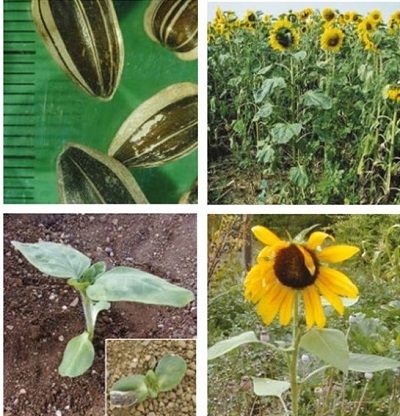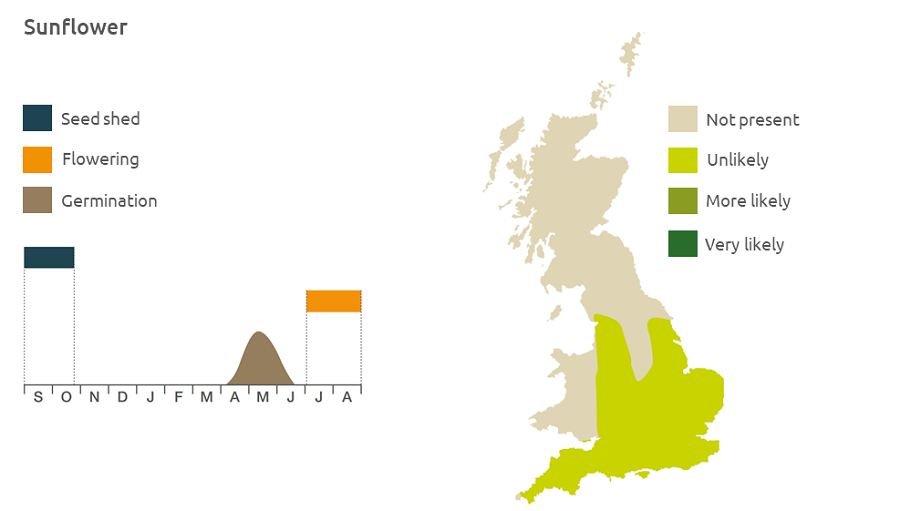- Home
- Knowledge library
- Distribution and biology of sunflower volunteer weeds in the UK
Distribution and biology of sunflower volunteer weeds in the UK
Sunflower usually occurs as a volunteer from previous crops or from bird seed. Find out how to identify and control it.
Overview
Sunflower (Helianthus annuus) seeds germinate in late spring and plants flower and set seeds in the same growing season. The seeds are eaten by birds and small mammals.
- It has value to biodiversity
Description
It is a sturdy annual dicotyledon, growing 1–3 m tall. At all stages the plant is very large, with sturdy stems and large bright, yellow flowers.
Key features
Flowers: Flowerheads face the sun and sometimes track it. They dip as they ripen.

Location and life cycle

Geographic distribution
Sunflower grows mostly in the Midlands and south of England, mainly as a volunteer from previous sunflower crops, bird-seed etc., on wasteland and banks.
Soil type
It requires nutrient-rich and moist soils to grow.
Seed statistics
- Seed weight: 6.67 mg
- Seed longevity: <2 years
Management
The seeds of sunflower can persist in the soil for up to five years and have the ability to germinate at a considerable depth and over a long period.
At ADAS Boxworth, on a clay soil susceptible to cracking, sunflowers were found to germinate in the cracks and appear in following crops.
Although it may occur as a volunteer in the two years following a crop, it rarely persists for longer.
The growth of these volunteers was more vigorous where the crop was less competitive, especially on headlands and in gateways.
It is easily cleaned out from most other crop seeds.
For advice on herbicides, please speak with your agronomist or adviser.
When was this information last updated?
This page is based on content from the encyclopaedia of arable weeds publication. Since it was first released in 2008, the publication has been redesigned several times but not revised. However, it remains a good foundation for general information on the distribution and biology of weeds.

